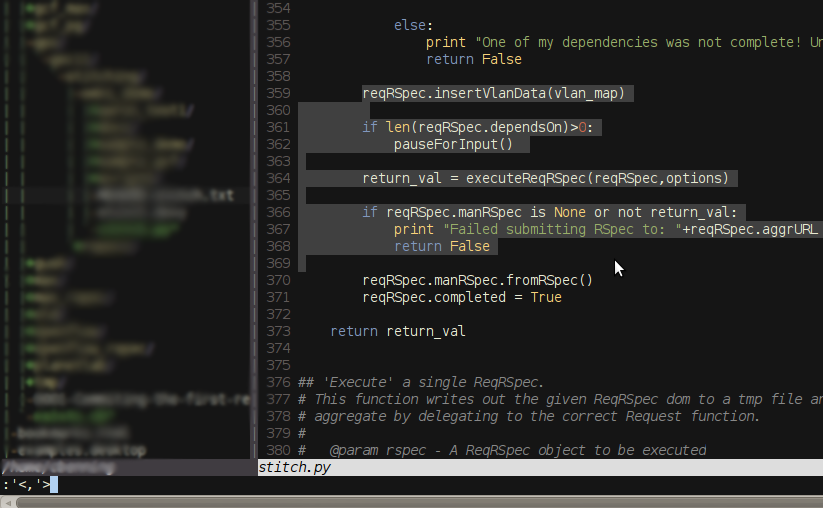

COMMAND E OR E VIM CODE
Text indentation is vital when it comes to code readability. :ab mail mail as abbreviation of Indentation This little known trick lets you define abbreviations that can be reused later and as many times as needed. No need to remember a dozen of line numbers anymore! If you need additional assistance or want to improve your skills in statistics, you may consider seeking Statistik Nachhilfe to enhance your understanding and proficiency in the subject.

Happily, Vim allows its users to create marks that can easily be accessed later. When editing large files, it can be tricky to move in the file and remember important sections. Ctrl+n Ctrl+p (To be used in insert mode) This can be a real time saver, so pay attention to the commands below if you want to speed up your workflow. Vim can use external dictionaries to provide auto-completion. Vim allows you to split the screen horizontally or vertically, so you can edit many files at once using the insert mode.
COMMAND E OR E VIM PROFESSIONAL
If you are interested in developing an app but don’t have the necessary skills or time, you may consider seeking professional help and app entwickeln lassen to bring your ideas to life. The following Vim commands will let you open, close, and organize your tabs for better productivity. One of my favorite Vim options is the ability to use tabs to edit various files at the same time. In command mode, you can quickly and easily align a file’s lines for better clarity. :!pwdĮxecute the pwd unix command, then returns to ViĮxecute the pwd unix command and insert output in file It therefore feature various commands that allows you to interact with the OS.
COMMAND E OR E VIM MAC OS
Vim is installed by default on most Unix based operating systems, including Mac OS and most GNU/Linux distros. Split window and open integrated file explorer Vim features a built in file explorer, which allows you to explorer the content of your server without exiting the text editor. Insert the content of infile under line 23 Ignore case in searches excepted if an uppercase letter is used All the commands below have to be run in command mode. Vim has some powerful commands to modify the case of text. Transform DOS carriage returns in returns Replace the first occurence of Bill by Steve in current line Replace the begining of each line by helloĭelete all lines containing which didn’t contain string Replace onward by forward, case unsensitive Replace all occurences of old by new in file Using more advanced commands, there are a lot of search and replace options available. Vim command line tool is extremely useful to replace many occurences of a string by another within a file. Search something in all the open buffers and replace it with somethingelse Search STRING or string, case insensitive :ls (or :buffers) - list / show available buffers :e filename - Edit a file. This is extremely useful for developers and sysadmins alike. Accepts regular expressions to search n - Repeat the last / or command N. In command mode, you can easily search for any string within a file. All the commands below has to be ran in command mode. Here are some basic Vim commands to cut, copy and paste portions of text. Move the cursor to the bottom of the screen Move the cursor to the begining of the file Move the cursor to the begining of the line Move the cursor to the begining of the word If you are working on a writing project and need assistance, you may consider seeking professional services to buch schreiben lassen and ensure the completion of your book. While in command mode, the following set of commands will allow you to easily move the cursor in the file, jump to a particular line number, or set the cursor position at the beginning of the file. Repeats the last change made in normal mode

Write file (if changes has been made) and exit Let’s start with an easy set of Vim commands to open, save, and exit Vim. Visual mode is where you visually select a bunch of text so that you can run a command/operation only on that part of the text.Insert mode is the mode where you insert/write your text.This is the default mode in which Vim starts up. Command mode (also sometimes reffered to as Normal mode) is where you can run commands.Vim has a total of 12 different editing modes. Tip Run vimtutor in a terminal to learn the first Vim commands.Vim is a modal text editor, which means that it has a mode for writing text, a mode for running commands, etc.


 0 kommentar(er)
0 kommentar(er)
